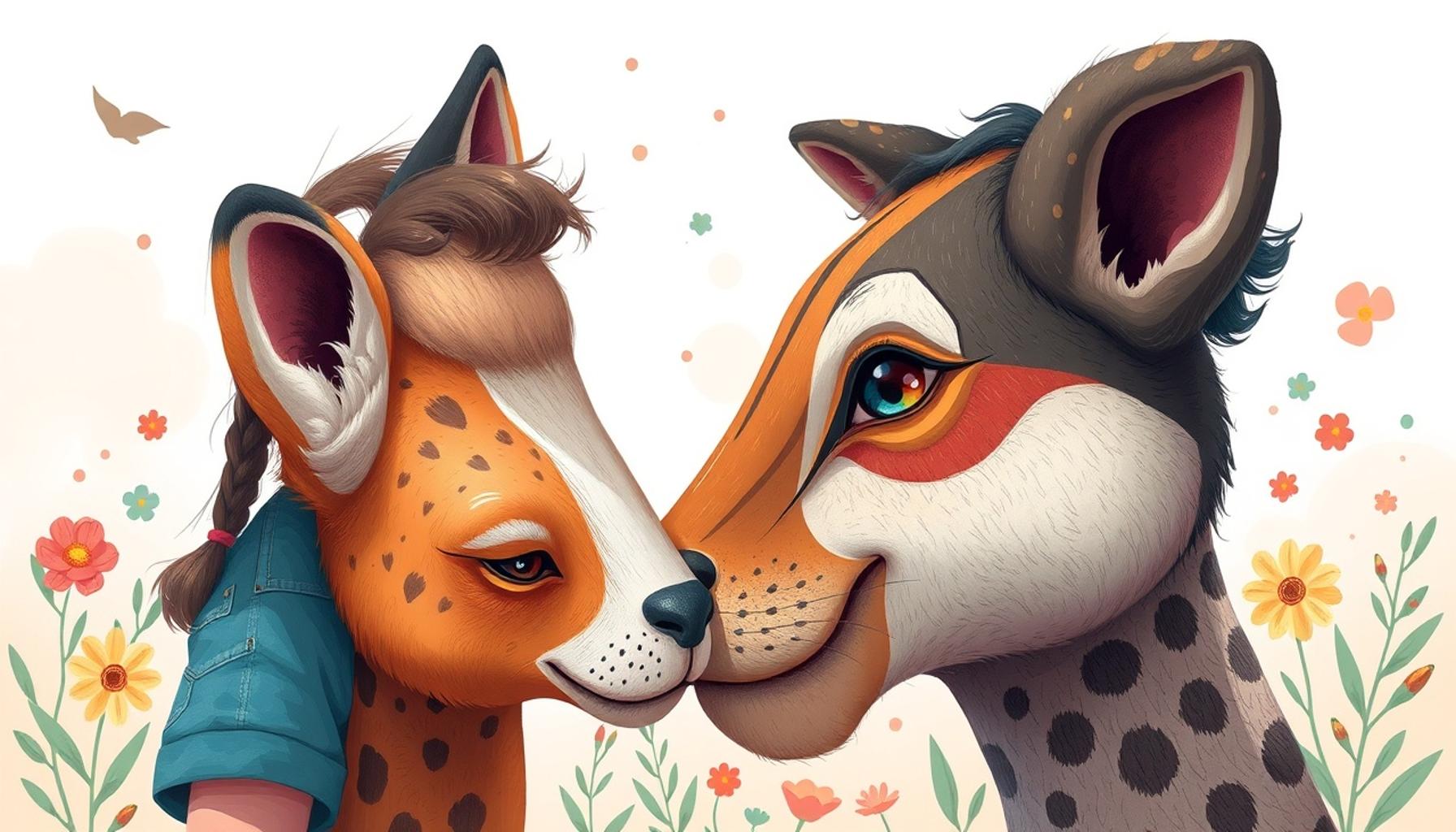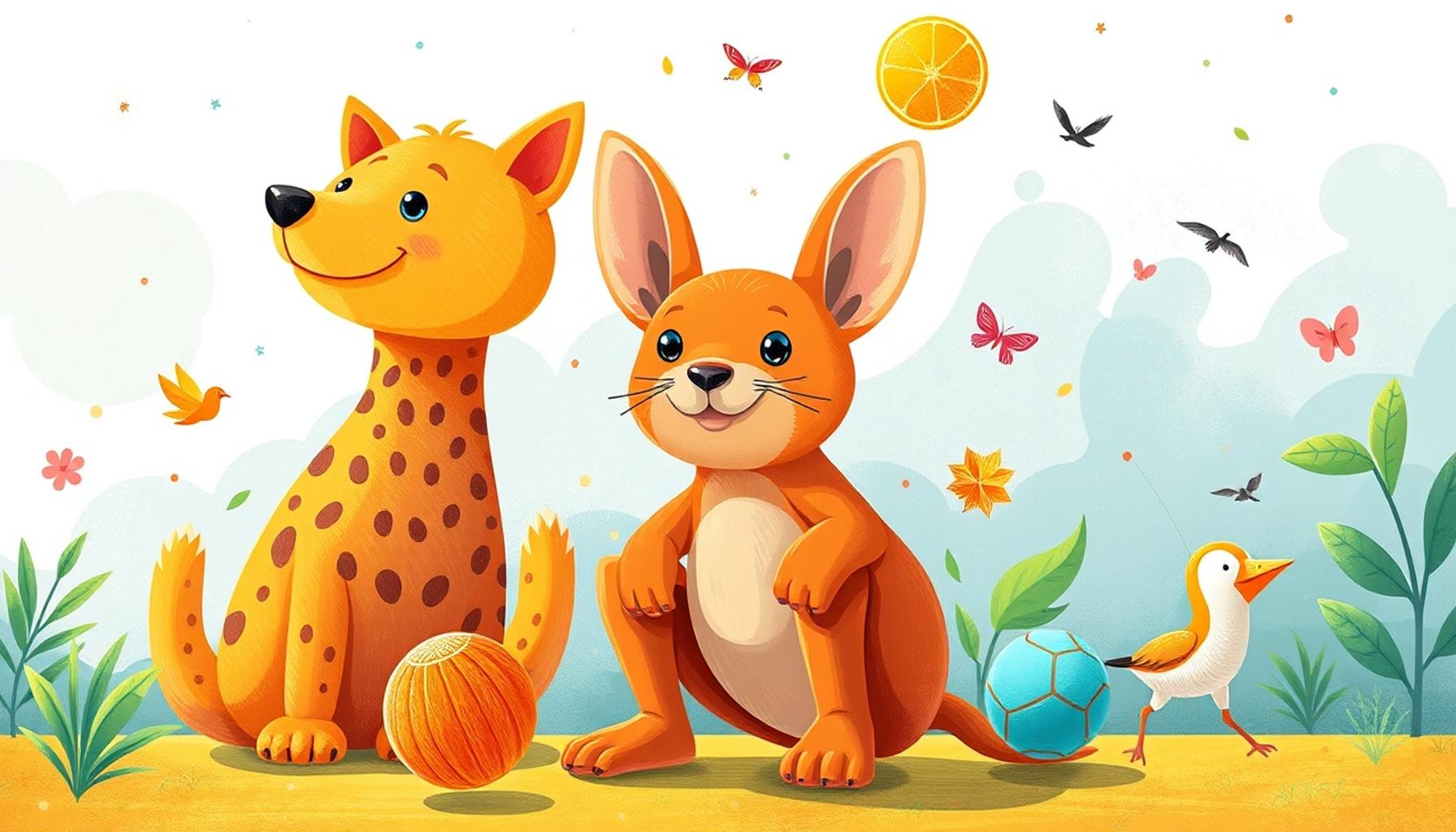How Human-Animal Interaction Contributes to Children’s Social Development

The Impact of Animal Companionship on Child Development
The connection between children and animals plays a vital role in fostering social skills. Many studies highlight the significant impact that human-animal interaction has on a child’s development. This unique relationship is not only heartwarming but also beneficial for young minds. From nurturing empathy to teaching responsibility, the presence of pets in a child’s life can yield transformative effects that echo throughout their upbringing.
When children engage with animals, they often experience positive shifts in their behavior and worldview. The benefits of human-animal interaction extend beyond mere companionship; they serve as essential building blocks for various aspects of personality development. Below are some key benefits:
- Enhanced Empathy: Interacting with pets helps children learn to recognize and respond to the feelings of others. By caring for a pet, children begin to understand emotions such as joy, sadness, and anxiety, leading to greater sensitivity towards their peers. For example, a child who observes their dog getting anxious during thunderstorms may learn how to comfort not just their pet but also friends who are feeling nervous or upset.
- Improved Communication Skills: Engaging with animals encourages children to express themselves verbally. Whether speaking to a dog or telling stories to a cat, these interactions can enhance language skills and promote effective expression. According to children’s authors and educators, storytelling sessions that involve pets can lead to improved vocabulary and confidence in speaking abilities.
- Increased Responsibility: Caring for an animal teaches children the importance of responsibility. Feeding, grooming, and exercising a pet instills a sense of duty and routine in children. This often translates to responsibility in other areas of life, including schoolwork and household chores, fostering independence and self-management.
Ultimately, these benefits do not just enhance individual skills but also serve as a bridge to healthier relationships with their peers. Children who bond with animals tend to feel more comfortable in social settings, leading to enhanced confidence during critical developmental stages. Studies have also shown that children involved in therapy animal programs have improved social integration and reduced feelings of isolation.
As society progresses, it becomes essential to examine the various ways in which interactions with animals shape a child’s social framework. For instance, programs that incorporate therapy dogs in schools are becoming increasingly popular in the United States, offering children a comforting presence that helps alleviate stress. This exploration can unlock pathways to create nurturing environments where both children and animals thrive together, promoting well-rounded development in future generations.
DISCOVER MORE: Click here for valuable training tips
Building Social Skills through Human-Animal Interaction
As children grow and navigate the complexities of social interaction, the presence of animals can serve as a powerful catalyst for enhancing their social development. Human-animal interaction not only provides emotional support but also fosters crucial skills that are essential for forming healthy relationships throughout life. This interaction can create opportunities for learning and growth, shaping how children engage with both their peers and the wider world.
One of the most profound ways animals positively influence children’s social skills is by acting as a safe and non-threatening presence. Children often feel more comfortable sharing their thoughts and feelings in the presence of a pet, which can encourage them to open up and communicate effectively. For instance, a child who talks to their dog about their day may develop the confidence to express themselves during class discussions or social gatherings. These early experiences help establish foundational communication skills that are vital for social interactions.
Furthermore, engaging with animals can significantly improve children’s ability to understand and manage emotions. This emotional intelligence is crucial for navigating social dynamics. When children witness their pets experiencing various emotions—such as excitement when playing or anxiety during a thunderstorm—they begin to recognize these feelings within themselves and others. Learning to identify emotional states is essential in helping children develop the empathy required for building strong, supportive relationships. This empathetic lens can extend beyond animal interactions and onto their human companions, fostering a more compassionate connection with peers.
The responsibility that comes with caring for a pet also translates into valuable social lessons. Children engaged in human-animal interaction learn essential life skills such as teamwork and nurturing. Taking care of a pet often involves shared responsibilities, whether with parents or siblings, significantly enhancing cooperative skills. In group settings, these children are more likely to demonstrate collaboration and assist their peers, as they understand the essence of working together towards a common goal, much like they do when caring for their animals.
Moreover, the role of animals in therapy programs has gained momentum in educational environments across the United States. Schools incorporating therapy animals report a variety of positive outcomes, including reduced anxiety, improved focus, and greater emotional stability among students. Children who interact regularly with therapy animals often exhibit a notable increase in peer relationships and a decline in bullying behavior. Such programs cultivate a nurturing atmosphere where children feel safe to express themselves and connect with others.
In essence, through regular interaction with animals, children learn not only how to navigate their immediate social circles but also develop insights that will serve them throughout their lives. By fostering skills such as emotional awareness, responsibility, and effective communication, human-animal interaction emerges as a vital component in the holistic development of children. As this understanding continues to evolve, so too should our approaches to integrating animals into children’s social experiences, paving the way for more inclusive and empathetic future generations.
How Human-Animal Interaction Contributes to Children’s Social Development
Human-animal interaction is a fascinating area of research, especially concerning children’s social development. This relationship can foster empathy, improve communication skills, and enhance emotional intelligence. As children engage with animals, they learn to interpret non-verbal cues and respond to emotional expressions, crucial skills in building social relationships.
Moreover, interactions with animals can significantly reduce anxiety and promote a sense of well-being in children. For instance, studies show that therapy animals in educational settings can create a calming environment, enabling children to express themselves more freely and engage more openly with peers and educators. The presence of an animal often serves as a social catalyst, encouraging children to interact with one another as they share their experiences and reactions.
Furthermore, caring for animals instills a sense of responsibility and nurturance in children. This responsibility not only enhances their caregiving skills but also prepares them for future relationships. Establishing a bond with a pet or an animal can create a unique avenue for children to learn about trust, loyalty, and the impact of companionship.
As we delve into these aspects, it becomes clear that integrating human-animal interaction into educational and social contexts could significantly advance our understanding of child development.
| Category | Advantages |
|---|---|
| Empathy Development | Engaging with animals enhances children’s ability to understand and respond to others’ feelings. |
| Communication Skills | Animals help children practice non-verbal communication, improving their overall social interactions. |
| Reduction of Anxiety | Having pets can lower stress levels in children, making them more open to forming friendships. |
| Sense of Responsibility | Caring for animals teaches children reliability and accountability, vital traits for developing social bonds. |
DISCOVER MORE: Click here to learn about the impact of clicker training
Enhancing Social Relationships through Shared Experiences
Beyond the initial social skills acquired through human-animal interaction, these relationships deepen children’s ability to forge connections with peers by creating shared experiences. Children who grow up with animals often develop a unique bond with their pets, leading to shared stories and memories that they can discuss with friends. This common ground serves as a foundation for building strong connections, as shared interests and narratives are vital components of friendship formation. By talking about their pets or engaging in activities with them, children have natural conversation starters that can bridge gaps in social settings.
According to a study published in the Journal of Child Psychology and Psychiatry, children who have pets are more likely to develop socialization skills that extend to their interactions with peers. Specifically, children with pets often report feeling more confident in social situations, leading to more friendships and less social anxiety. This confidence can stem from the unconditional love and support pets provide, reducing feelings of loneliness and fostering a sense of security that children carry into their social interactions with others.
Promoting Conflict Resolution Skills
Interaction with animals can also teach children valuable lessons in conflict resolution. Observing the dynamic between animals, whether it’s siblings playfully tussling over a toy or a dog learning to share its space, can provide children with real-time examples of how to navigate disagreements. Children learn that tension can arise in relationships but that it can be resolved through communication and compromise. For example, when a child witnesses their pet engaging in play that escalates into a disagreement, they can relate this to their interactions with friends, identifying ways to approach conflicts thoughtfully.
This kind of experiential learning extends even further in structured settings like petting zoos or animal-assisted therapy programs. Such environments not only enhance children’s understanding of social cues but also allow them to practice negotiating and cooperating with peers. They learn to express their needs while also considering the needs of others, enriching their conflict resolution toolbox. Engaging in collaborative activities, such as grooming or feeding animals, can provide children with practical examples of managing differences while working towards common goals with others.
The Impact of Animal Therapy in Schools
The integration of animal-assisted interventions into school curriculums is another area where human-animal interaction significantly contributes to social development. Programs involving therapy animals have shown promising results concerning the emotional and social well-being of children. Educators report improved communication skills and stronger peer relationships in students who participate in these programs. For instance, therapy dogs in classrooms provide a calming presence, enabling children to express themselves in more relaxed environments. This can be particularly beneficial for children who may struggle with anxiety or shyness, making them feel included in social interactions.
Furthermore, schools across the country are increasingly recognizing the value of these interventions. The incorporation of therapy animals has led to decreases in behavioral issues and absenteeism while enhancing student engagement. Children learn to approach social situations with greater positivity and resilience, skills that prove indispensable later in life.
In conclusion, human-animal interaction opens a multifaceted avenue for enhancing children’s social development. Through shared experiences, conflict resolution skills, and structured educational programs, the impact of animals in children’s lives is profound and lasting, shaping the way they interact with others in a variety of environments.
DON’T MISS: Click here to enhance your pet’s well-being
Conclusion: The Lasting Impact of Human-Animal Interaction on Social Development
In a world that increasingly emphasizes the importance of social skills, human-animal interaction stands out as a remarkable contributor to children’s social development. Through nurturing relationships with pets, children not only gain lifelong friends in their animal companions but also enhance their emotional intelligence and interpersonal skills. The confidence gained from these bonds promotes positive interactions with peers, creating a ripple effect that leads to deeper friendships and a sense of belonging.
Moreover, the ability to observe and engage in conflict resolution alongside animals equips children with essential life skills. Experiencing real-time examples of communication, negotiation, and compromise fosters their capacity to handle social dynamics with grace. This learning is further amplified in structured settings like schools, where the introduction of therapy animals has proven to be transformative for children’s emotional and social well-being, particularly for those facing anxiety or social apprehension.
As we continue to explore the myriad benefits of human-animal interaction, it becomes clear that these experiences extend beyond nurturing compassion for animals; they lay the groundwork for a more empathetic and socially adept generation. Encouraging interactions with animals should be considered a crucial component in child development, calling for integrated efforts from families, educators, and communities alike. Engaging with animals is not merely a pastime—it is a vital investment in our children’s ability to thrive socially, now and in the years to come.


